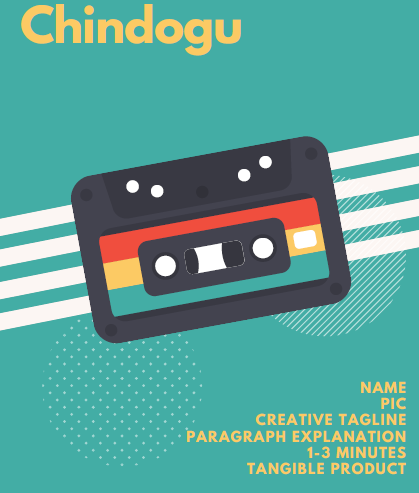
My first year at a new school was great, so when it came time for an end of the year exit interview with my principal, I didn’t have much to complain about. Our school was going on a double block schedule that would provide additional minutes of support for students who failed the English and/or Math SOLs.
What that meant for the rest of the students was that they would be slated to attend an “Innovation and Literacy” period with silent sustained reading for the first thirty, Innovation the second thirty and remedial needs the last thirty. I saw an opportunity.
I went to the meeting and proposed a truly innovative alternative: turning my students into entrepreneurs. Our school recently was awarded a $20k grant to enhance our current Makerspace and I could see the gears turning in my principal’s mind.
He didn’t say yes but he didn’t say no either. He told me to see what I could come up with and get back to him. It was at that moment that the stars began to align.
I sent out emails to everyone in the Richmond metro area that was associated with entrepreneurship. One particular email was of great interest to me: the one I sent to Jeff Foster at the VCUarts Center for Creative Economy. The program was partially designed to turn the stereotypical starving artist into a profitable business person.
I waited, and waited, and waited. A month went by of obsessively checking my inbox when I received an email from Jeff.
We set up a meeting at the VCUarts Depot Building on VCU’s campus in Richmond, VA. For nearly two hours we brainstormed about what “this” could look like and it was pretty awesome looking back at how the creativity that came out of that single meeting.
The first day of Innovation class. Students entered the room for the very first time. Like every new group of students, they had no idea what to expect. Little did they know, they were going to be apart of a truly innovative classroom experience that no one else in the state, the county, or the school had ever experienced. We would be doing things differently than their classmates. Their ears perked up.
The first task for my students: Chindoguu
Chindogu is a tool that is not useful, but not necessarily useless either.

The task would be to use the Stanford D. School’s design thinking framework, ultimately creating a physical prototype, of a useless tool, getting feedback and presenting their work. When I introduced Chindogu, they were confused. When I told them they would be presenting in front of a group of exchange students from China, two college professors, parents, and their principal, they were terrified. One student even dropped the class.

But for those that stuck around and persevered through iteration after iteration, and through practicing their Shark-Tank-like product pitch, students walked away with a new-found swagger that they didn’t possess before this experience.

In the following month, students continued to push themselves “outside-the-box” and learned about design principles from watching the Tinker Hatfield episode on the Netflix docu-series Abstract: The Art of Design. They took part in a condensed version of a capstone project created by the Stanford Innovation Lab centered around bringing value back to a “lost” sock.
They also collaborated on the classic “How to Make Toast” activity and worked with kindergarten students at a local elementary school on green screen videos related to the kindergarten concepts of past and present.
All of this within the first two months of school! What’s even better: what happened when I stopped creating experiences for them and let them take the reins.

We sat in a circle for 90 minutes and had a conversation about what to do next. Students decided that they wanted to do something to help people (this in and of itself is simply amazing for a group of thirteen-year-olds). They decided to create something based on the concept of making people smile. They would perhaps create a piece of artwork displayed in the cafeteria, write positive quotes, and maybe even create a hashtag to get people talking about it on social media.
What happened next, no one could have anticipated.
The following day, the local news media released a video showing a neighboring middle school. The video showed white students making racist comments and actions against an African-American student. As you can imagine, the news spread quickly, and this was all the students were talking about in the hallways the next day.
When we gathered in our circle this time, no one commented on the details of the story but said they wanted to pivot (my word) to a concept of unity. They hated the fact that if someone Googled “Henrico County Middle School”, this was what you got.
They wanted the world to know that our class was different. That we got along with each other and wanted to do something to change the narrative. They wanted to create a video that would go viral and end up being highlighted on Ellen.
Typical 8th-grade response right? Wrong.
They knew that the impact of a video only would be short-lived. So, they decided that we should create something long-lasting like a business, no, a movement around the concept of unity. What they didn’t know was that their work was already having an impact in their world and a lot of people were starting to pay a lot of attention to what they were doing.
Part 2 (Community Partners: How 8th Graders in Virginia Are Changing the World (and Education)…Coming Soon
3 thoughts on “Part 1: How 8th Graders in Virginia Are Changing The World (and Education)”